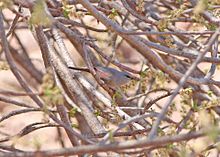
The grey partridge, also known as the gray-legged partridge, English partridge, Hungarian partridge, or hun, is a gamebird in the pheasant family Phasianidae of the order Galliformes, gallinaceous birds. The scientific name is the Latin for "partridge", and is itself derived from Ancient Greek perdix.

The white-backed woodpecker is a Eurasian woodpecker belonging to the genus Dendrocopos.
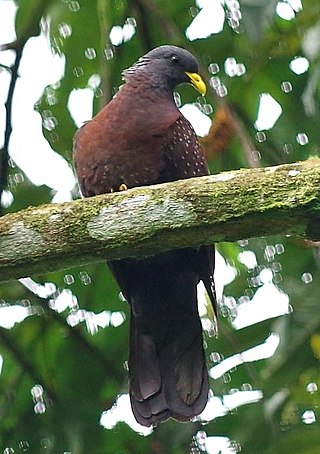
The São Tomé olive pigeon or maroon pigeon is an endangered species of pigeon which is endemic to the island of São Tomé off the coast of western Africa. It was described by José Vicente Barbosa du Bocage in 1888.
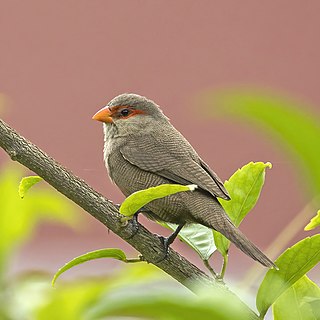
The common waxbill, also known as the St Helena waxbill, is a small passerine bird belonging to the estrildid finch family. It is native to sub-Saharan Africa but has been introduced to many other regions of the world and now has an estimated global extent of occurrence of 10,000,000 km2. It is popular and easy to keep in captivity.
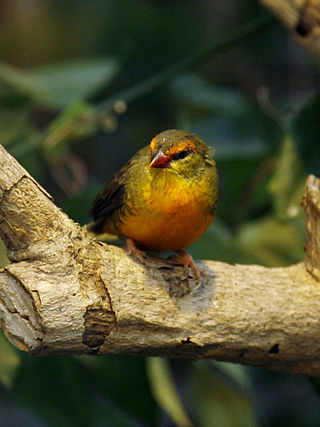
The orange-breasted waxbill, also known as the zebra waxbill, is a small sparrow-like bird with a reddish iris, orange breast, red bill and dark olive-green plumage. The male has a red rump, dark bars on the whitish flank and a scarlet eyebrow stripe. The female is duller and smaller than male; it also lacks the male's red eyebrow.

The African firefinch, also called the blue-billed firefinch, is a common species of estrildid finch found in many parts of Africa. It has an estimated global extent of occurrence of 5,400,000 km2 (2,100,000 sq mi).
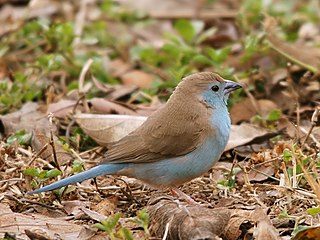
The blue waxbill, also called southern blue waxbill, blue-breasted waxbill, southern cordon-bleu, blue-cheeked cordon-bleu, blue-breasted cordon-bleu and Angola cordon-bleu, is a common species of estrildid finch found in Southern Africa. It is also relatively commonly kept as an aviary bird.

The violet-eared waxbill or common grenadier is a common species of estrildid finch found in drier land of Southern Africa.

The grey waxbill or black-tailed waxbill is a common species of estrildid finch found in wetter land of Southern Africa. It has an estimated global extent of occurrence of 670,000 km2 (260,000 sq mi).

The swee waxbill, is a common species of estrildid finch native to Southern Africa.
The Anambra waxbill is a species of estrildid finch found in wetter land of southern Nigeria and Benin. It has an estimated global extent of occurrence of 38,000 km2.

The fawn-breasted waxbill is a common species of estrildid finch found in central Africa. It has an estimated global extent of occurrence of 1,800,000 km2. Estrilda paludicola, E. ochrogaster and E. poliopareia have been lumped into E. paludicola.
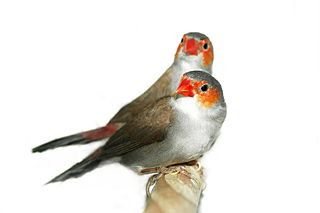
The orange-cheeked waxbill is a common species of estrildid finch native to western and central Africa, with an estimated global extent of occurrence of 3,600,000 km2.

The Arabian waxbill is a highly sociable species of estrildid finch native to Yemen and south-western Saudi Arabia. It has an estimated global extent of occurrence of 20,000 – 50,000 km2.

The crimson-rumped waxbill also known as rosy-rumped waxbill is a common species of estrildid finch found in eastern Africa. It has an estimated global extent of occurrence of 830,000 km2.
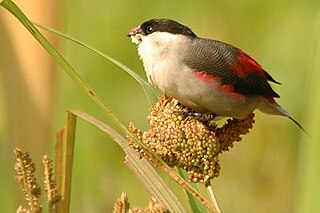
The black-crowned waxbill is a common species of estrildid finch found in western-central Africa. It has an estimated global extent of occurrence of 1,000,000 km2.
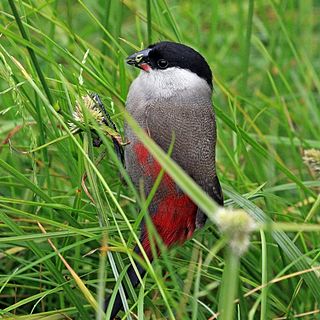
The black-headed waxbill is a common species of estrildid finch found in central Africa. It has an estimated global extent of occurrence of 620,000 km².

The black-faced waxbill is a common species of estrildid finch found in southern Africa. It is found in Angola, Botswana, Kenya, Namibia, Rwanda, South Africa, Tanzania, Uganda, Zambia and Zimbabwe. The IUCN has classified the species as being of least concern.

The black-cheeked waxbill or red-rumped waxbill is a common species of estrildid finch found in east Africa. It has an estimated global extent of occurrence of 400,000 km2 (150,000 sq mi).
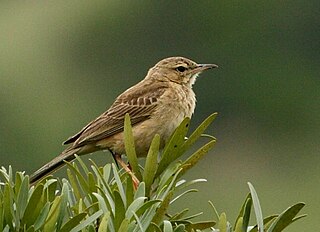
The buffy pipit is a species of bird in the Motacillidae family. It is found in plains and open countryside in southern and eastern Africa. The IUCN has assessed its conservation status as being of least concern.

